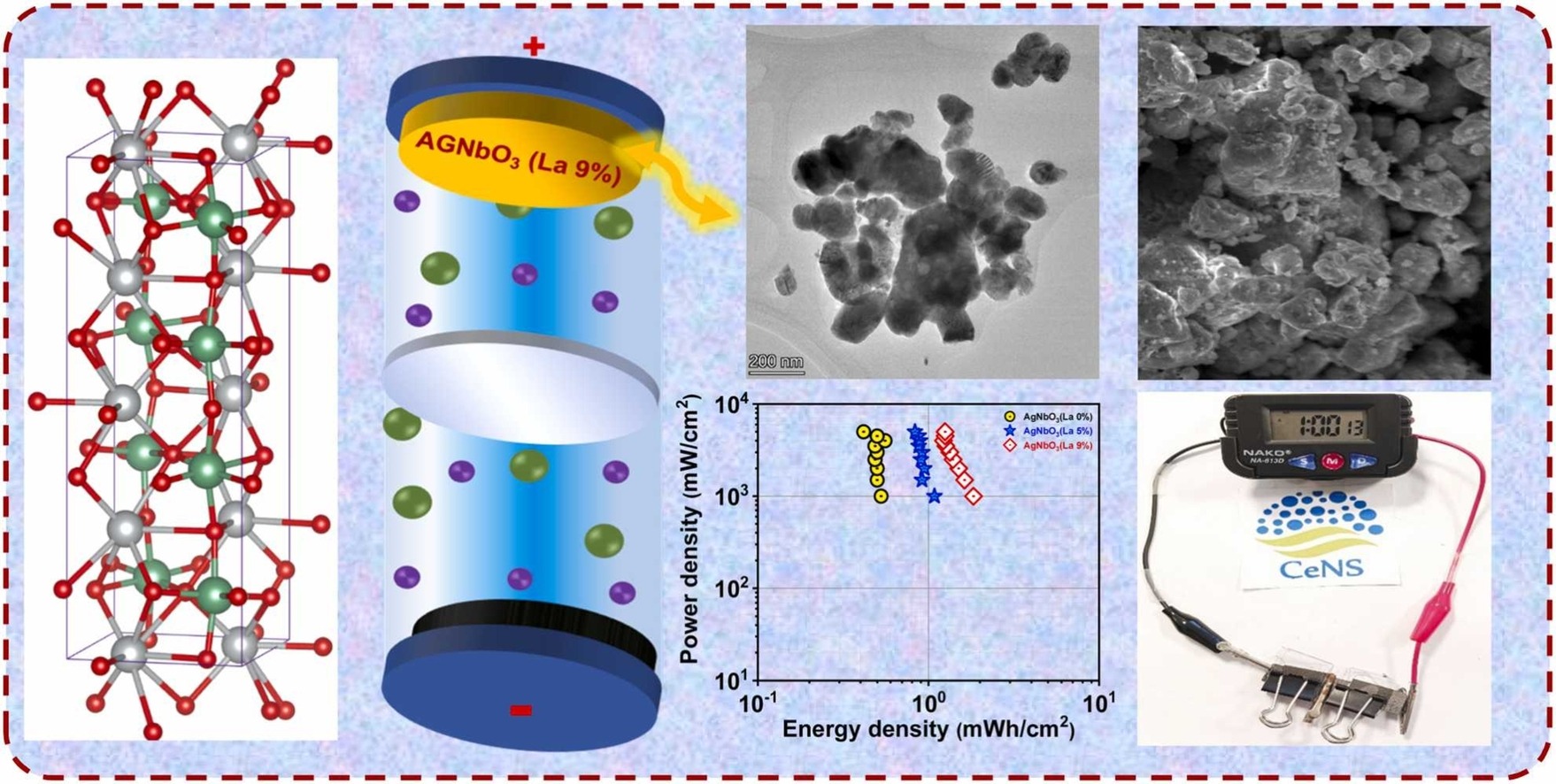Indian Scientists Create La-Doped Supercapacitor with 100% Energy Efficiency
Supercapacitors are a class of energy storage devices that combine the rapid charge-discharge abilities of capacitors with the energy density of batteries.

- Country:
- India
In a pioneering development that could revolutionize the energy storage landscape, a team of Indian researchers from the Centre for Nano and Soft Matter Sciences (CeNS), Bengaluru, in collaboration with Aligarh Muslim University (AMU), have successfully engineered a next-generation energy storage material that dramatically enhances the performance of supercapacitors—key components in high-speed energy storage systems.
The research, led by Dr. Kavita Pandey, focuses on the doping of lanthanum (La) into silver niobate (AgNbO₃) nanoparticles, resulting in unprecedented energy retention, charging speed, and long-term stability. Published in the reputed Journal of Alloys and Compounds, the study presents a potential leap in the global pursuit of clean, fast, and high-capacity energy solutions.
Why Supercapacitors Matter: The Bridge Between Batteries and Rapid Energy
Supercapacitors are a class of energy storage devices that combine the rapid charge-discharge abilities of capacitors with the energy density of batteries. They are used extensively in:
-
Portable electronics
-
Electric and hybrid vehicles (EVs)
-
Power backup systems
-
Renewable energy grids
However, despite their speed and longevity, traditional supercapacitors lag behind in energy density—the amount of energy they can store. Researchers globally have been searching for materials that can balance storage capacity, charge speed, durability, and safety.
The Innovation: Lanthanum-Doped Silver Niobate Nanoparticles
The core innovation in this research lies in manipulating the physical and electronic properties of AgNbO₃, a lead-free, eco-friendly perovskite oxide known for its excellent dielectric behavior and thermal stability. The scientists introduced lanthanum, a rare-earth element, into the silver niobate crystal lattice.
This lanthanum doping achieved two major outcomes:
-
Nanoparticle Shrinkage – The La-doping led to a significant reduction in particle size, increasing the specific surface area, which enhances the capacity for charge storage.
-
Improved Electrical Conductivity – Lanthanum atoms enhanced the material’s electron mobility, boosting charge-discharge speeds and enabling near-zero energy loss.
Astounding Results: 118% Capacity Retention, 100% Efficiency
Perhaps the most striking outcome of the experiment was the material’s ability to retain 118% of its initial energy capacity even after repeated charge-discharge cycles. This indicates not only excellent durability but also self-improving charge dynamics—a rare phenomenon in energy materials.
In terms of performance:
-
Coulombic efficiency reached 100%, meaning no energy was lost in the transfer process
-
The prototype supercapacitor showed exceptional charge stability and energy reversibility
-
An asymmetric supercapacitor prototype, built using the La-doped AgNbO₃ material, successfully powered an LCD display, highlighting its readiness for real-world applications
Significance in the Global Energy Context
This innovation arrives at a critical time when the world is transitioning from fossil fuels to renewable energy sources, which are often intermittent and require efficient storage systems to manage supply and demand.
La-doped AgNbO₃ supercapacitors can play a transformative role in:
-
Electric mobility: Providing fast charging with enhanced range
-
Grid stability: Smoothing fluctuations in wind and solar energy output
-
Consumer electronics: Miniaturizing power units while improving performance
-
Defense and aerospace: Where lightweight, reliable power systems are essential
Additionally, the lead-free nature of AgNbO₃ aligns with environmental and health regulations, making it a sustainable alternative to conventional storage materials.
Future Directions: Beyond Lanthanum and Toward Commercialization
Encouraged by these results, the research team is planning to:
-
Explore doping strategies with other rare-earth elements to further tune the properties of perovskite oxides
-
Develop scalable synthesis protocols to ensure cost-effective mass production
-
Integrate La-doped AgNbO₃ into hybrid energy storage devices that combine supercapacitor and battery technologies
-
Collaborate with industry partners for prototyping and testing under real-world load conditions
Dr. Kavita Pandey emphasized that this research is not just about academic discovery but about creating materials that address real energy challenges:
“Our goal is to build materials that are not only high-performing but also viable for the mass-market energy ecosystem of tomorrow.”
A Step Forward in India's Energy Tech Leadership
India has emerged as a formidable player in the field of materials science and clean energy research, and this breakthrough reaffirms the nation’s capability to contribute meaningfully to next-generation energy solutions. The collaboration between CeNS Bengaluru and Aligarh Muslim University, both working under the aegis of the Department of Science and Technology (DST), reflects the strength of inter-institutional synergy in driving innovation.
As the world demands faster, safer, and cleaner energy storage, the development of lanthanum-doped silver niobate stands as a milestone achievement—with the promise to power everything from smartphones to solar farms with greater efficiency and sustainability.
ALSO READ
ACME Solar Expands Clean Energy Footprint With Major PPA
World Bank Launches $150M Program to Boost Sri Lanka’s clean energy transition
SEFA Invests in Zambia’s Ilute Solar Project, Setting New Model for Clean Energy
MNRE Rolls Out National Start-Up Challenge for Solar and Clean Energy
India's Green Ammonia Revolution: A Clean Energy Leap Forward








